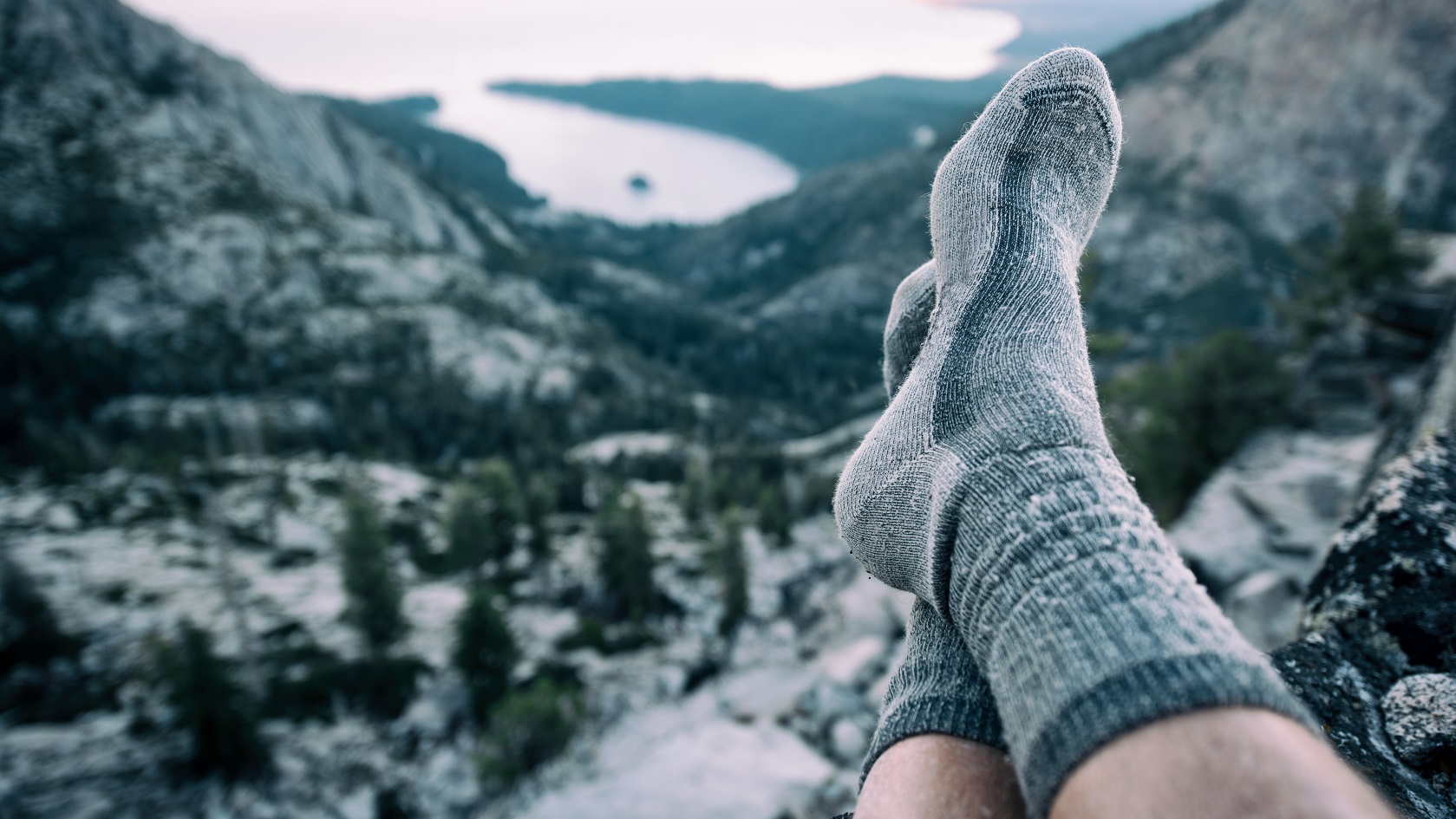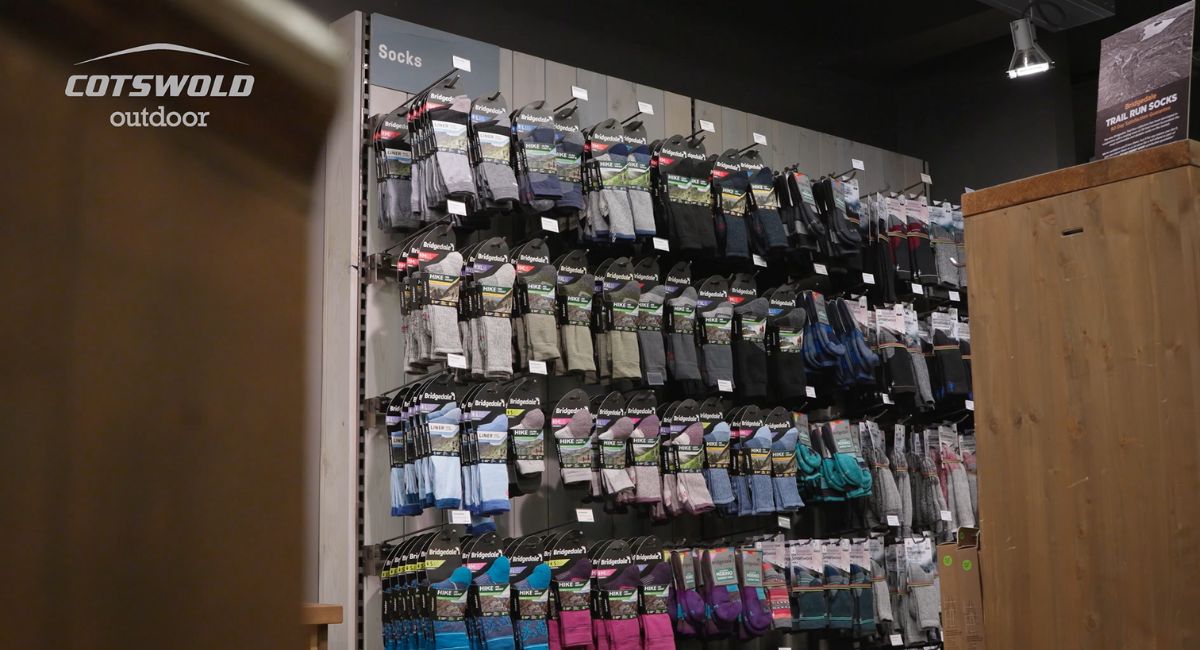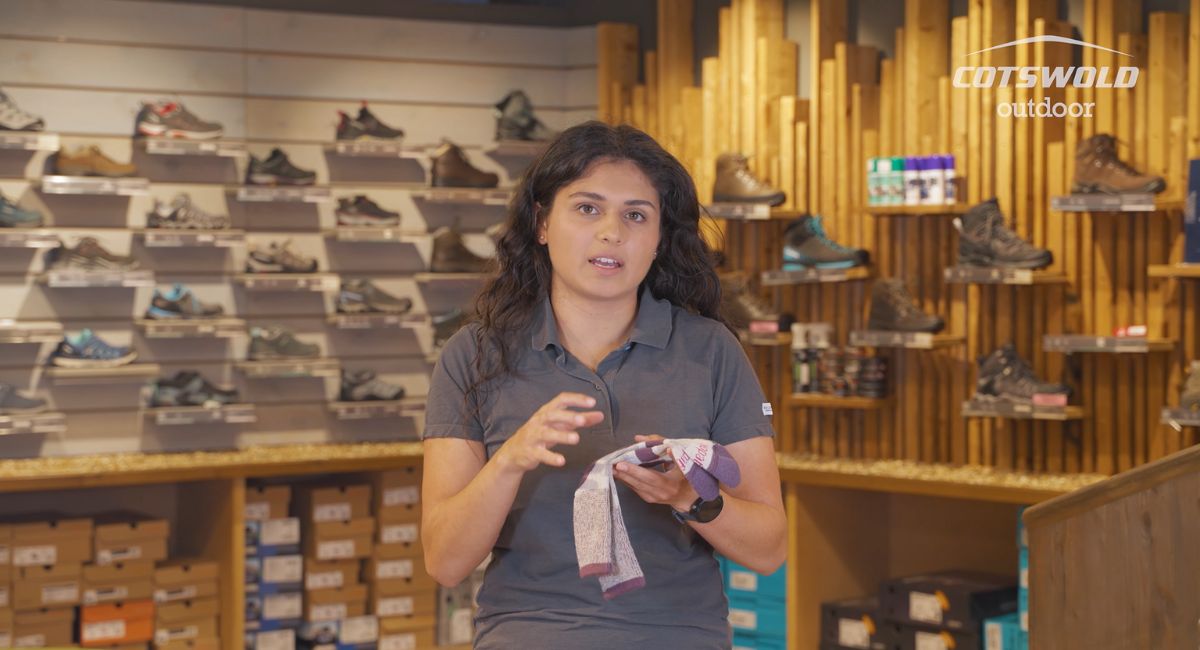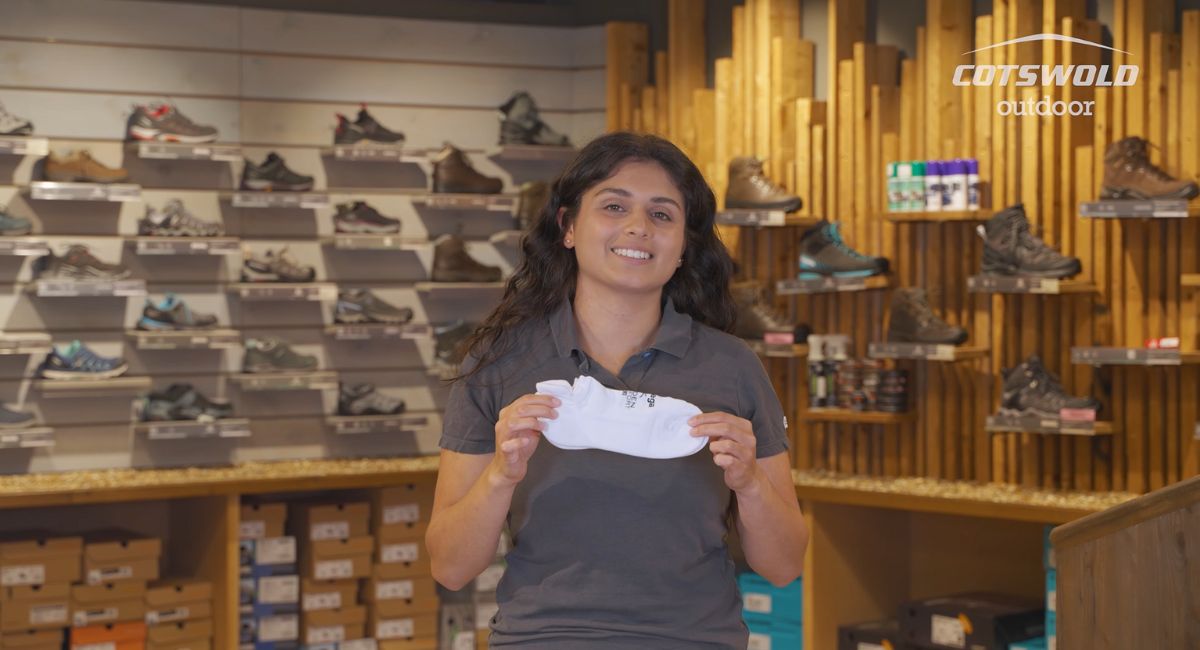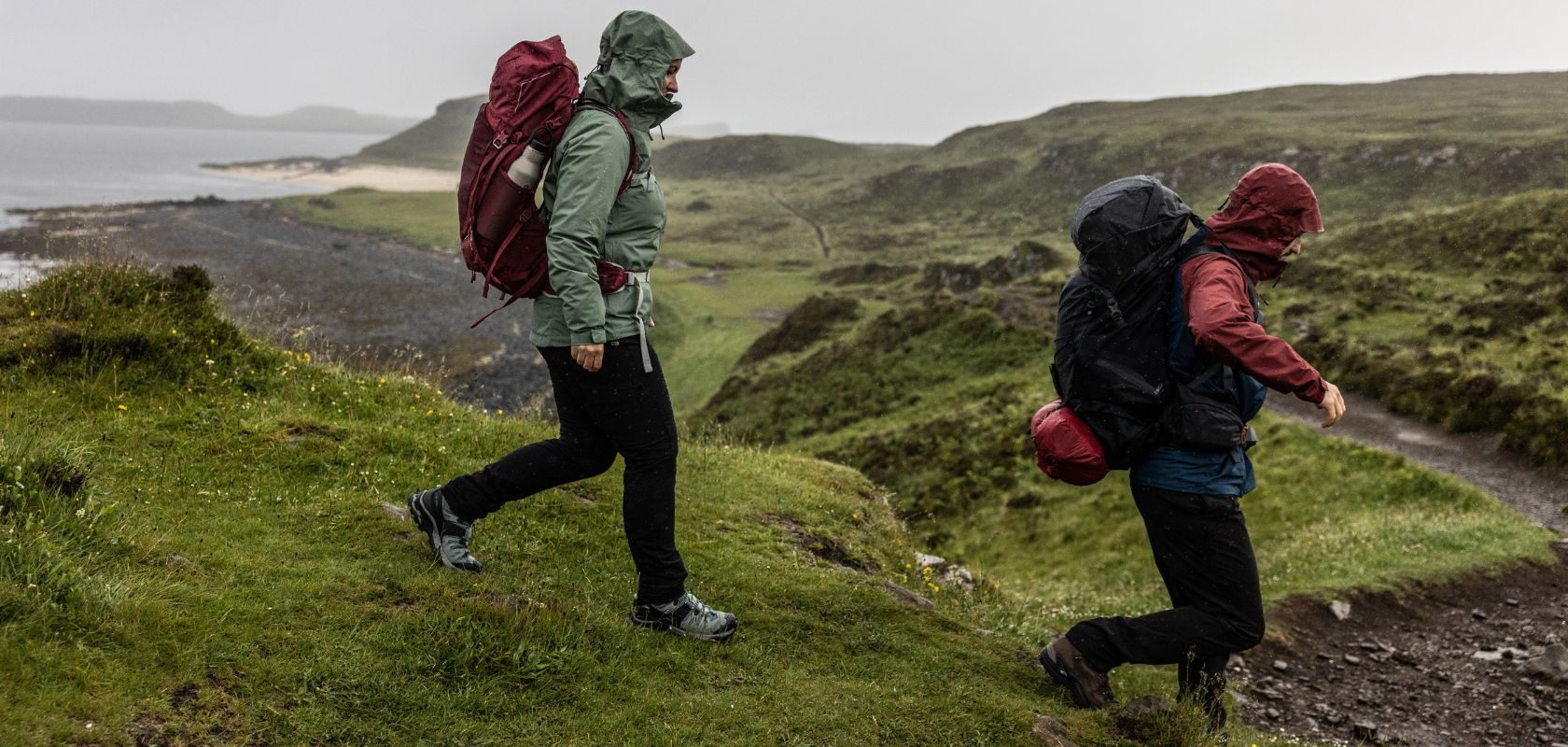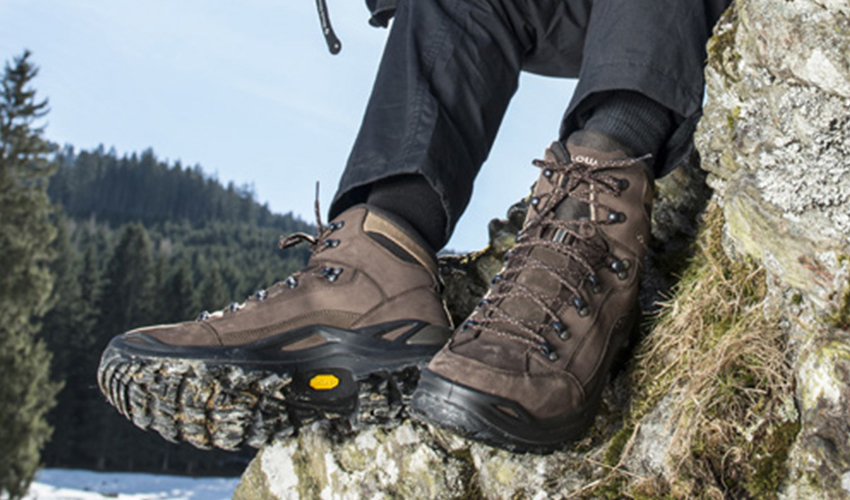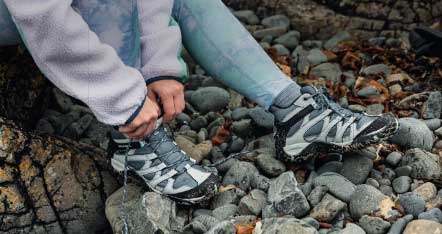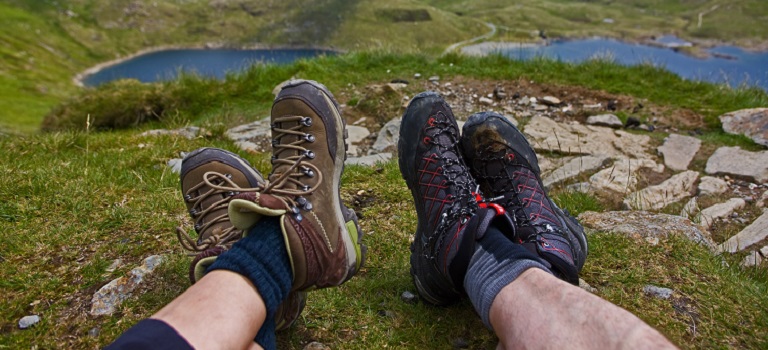Choosing The Best Walking Socks
Our Expert Guide to Finding the Right Pair
When you’re planning a walk-whether it’s a gentle ramble through rolling hills or a challenging trek across rugged fells-it’s easy to focus on boots, jackets, and rucksacks. But there’s one essential bit of kit that often gets overlooked: your socks. The right pair of walking socks can mean the difference between a joyful day outdoors and a painful trudge home with sore, blistered feet.
At Cotswold Outdoor, we believe that comfort starts from the ground up. That’s why we’ve put together this expert guide to help you choose the best walking socks for your next adventure. We’ll break down everything you need to know-from materials and fit to seasonal choices and top recommendations-so you can step out with confidence, whatever the weather or terrain.
Why Walking Socks Matter
Feet endure 1.5 times your body weight with each step during hikes. Poor sock choices lead to moisture build-up (averaging 250ml sweat/day during strenuous activity), blisters, and reduced circulation. Quality socks act as a second-skin interface between boots and feet, with advanced fabrics now offering 72-hour odour resistance and 40% faster drying times than cotton blends.
What Makes a Great Walking Sock?
The Right Materials
The fabric of your walking socks has a huge impact on comfort, durability, and performance. Here’s what you need to know about the most popular materials
Merino Wool
Soft, naturally antibacterial, and excellent at regulating temperature. Merino wool keeps your feet warm in winter, cool in summer, and resists odours better than most synthetics. Its moisture-wicking abilities help prevent blisters and keep your feet comfortable in all conditions.
Synthetic Fibres (Coolmax, Polyester, Acrylic)
The fabric of your walking socks has a huge impact on comfort, durability, and performance. Here’s what you need to know about the most popular materials
Nylon & Elastane
Added for durability and stretch, these fibres help socks keep their shape and fit snugly, even after repeated washing and long days on the trail.
Waterproof Membranes
Found in specialist socks for wet weather, these keep water out and your feet dry, though they may feel less breathable than standard socks. Typically, they’re made with a three-layer system for protection and comfort.
| Material | Moisture Wicking | Odour Resistance | Durability | Best For |
|---|---|---|---|---|
| Merino Wool (60%) | Excellent | 4/5 | 3/5 | Year-round hiking |
| Coolmax Polyester | Superior | 2/5 | 4/5 | Summer/High Sweat |
| Nylon-Reinforced | Moderate | 3/5 | 5/5 | Scree/Rocky Terrain |
| Waterproof Membranes | Limited | 5/5 | 4/5 | UK Winter Hikes |
Discover more key differences between Merino Wool and Cotton socks...
Fit and Cushioning
A great walking sock should fit snugly-neither too tight nor too loose-to prevent bunching and rubbing. Consider these features:
- Anatomical Design → Some socks are shaped for left and right feet for a more precise fit and better comfort.
- Arch Support → Built-in support reduces fatigue and keeps the sock in place, especially on long walks or uneven terrain.
- Cushioning → Padding in the heel, toe, and underfoot absorbs impact. Thicker socks are best for long hikes or rough terrain, while lighter socks suit short walks or summer days.
- Seamless Toes → Fewer seams mean less rubbing and fewer blisters, especially in the toe area.
Breathability and Moisture Management
Keeping your feet dry is crucial for comfort and blister prevention. Look for socks with:
- Mesh Panels → Improve airflow and help keep feet cool.
- Moisture-Wicking Fibres → Draw sweat away from your skin, keeping feet dry and reducing the risk of blisters.
The Right Fit and Length
As a rule, it's always best to try your socks with the footwear you intend to wear them with to check the two pieces work well in conjunction and are going to deliver the comfort and performance you need and want. Depending on whether you're fitting for a trail running shoe, walking shoe, or hiking boot, you'll want to think about the fit and sock height you desire. Your socks should feel comfortable - not too tight or too loose.
- Too Tight → They could start to affect the circulation in your feet.
- Too Loose → You’ll get friction putting you at a higher risk of blisters.
- Too Low → You may find that the shoe's heel and tongue start to rub.
- Too High → You might find your feet to become too warm.
Find out more about which length sock is best for you...
Seasonal Strategies: Choosing Socks for Any Conditions
Summer Walking Socks
In warm weather, choose lightweight, breathable socks made from merino wool or synthetic blends. Look for ventilation zones and minimal cushioning for cool, comfortable feet.
Recommended:
- Bridgedale Lightweight Merino
- Smartwool Hike Light Crew
Winter & Wet Weather Socks
For cold or wet conditions, opt for thicker socks with extra cushioning and higher merino content. Waterproof socks are ideal for boggy trails or rainy days, keeping your feet dry even if your boots get soaked.
Recommended:
- Sealskinz Waterproof All Weather (three-layer waterproof system)
Socks for Long-Distance Hikes
If you’re heading out for a multi-day trek, prioritise comfort and durability. Look for socks with reinforced heels and toes, and bring a few pairs to rotate and keep your feet fresh.
How to Prevent Blisters When Walking
Blisters are a common issue for walkers, but the right socks can help you avoid them. Here’s how:
- Choose socks that fit well-no bunching or slipping.
- Look for seamless toes to reduce friction.
- Keep your feet dry with moisture-wicking materials.
- Consider double-layer socks or wear a thin liner sock under your main pair for extra protection
Caring for Your Walking Socks
Blisters are a common issue for walkers, but the right socks can help you avoid them. Here’s how:
- Choose socks that fit well-no bunching or slipping.
- Look for seamless toes to reduce friction.
- Keep your feet dry with moisture-wicking materials.
- Consider double-layer socks or wear a thin liner sock under your main pair for extra protection
Shop Our Walking Sock Range
Check out more from our walking and hiking sock range, or click the button below to shop the entire collection...
FAQs
The best socks for walking are made from moisture-wicking materials like merino wool or technical synthetics, with enough cushioning for your chosen terrain. Brands like Bridgedale and Smartwool are favourites among UK walkers.
It depends on the weather, your boots, and personal preference. Thicker socks provide more cushioning and warmth, while thinner socks are cooler and better for summer or short walks.
Waterproof socks are a great investment for wet UK conditions, especially if your boots aren’t fully waterproof or you’re crossing streams and boggy ground. Just be aware they can feel less breathable than regular socks.
Bring at least two or three pairs – one to wear, one to dry, and a spare. Rotating socks helps prevent blisters and keeps your feet healthy.
Running socks can work for short walks, but they often lack the cushioning and durability needed for longer hikes or rough terrain.
Related articles

Let us know you agree to cookies
We use marketing, analytical and functional cookies as well as similar technologies to give you the best experience. Third parties, including social media platforms, often place tracking cookies on our site to show you personalised adverts outside of our website.
We store your cookie preferences for two years and you can edit your preferences via ‘manage cookies’ or through the cookie policy at the bottom of every page. For more information, please see our cookie policy.
